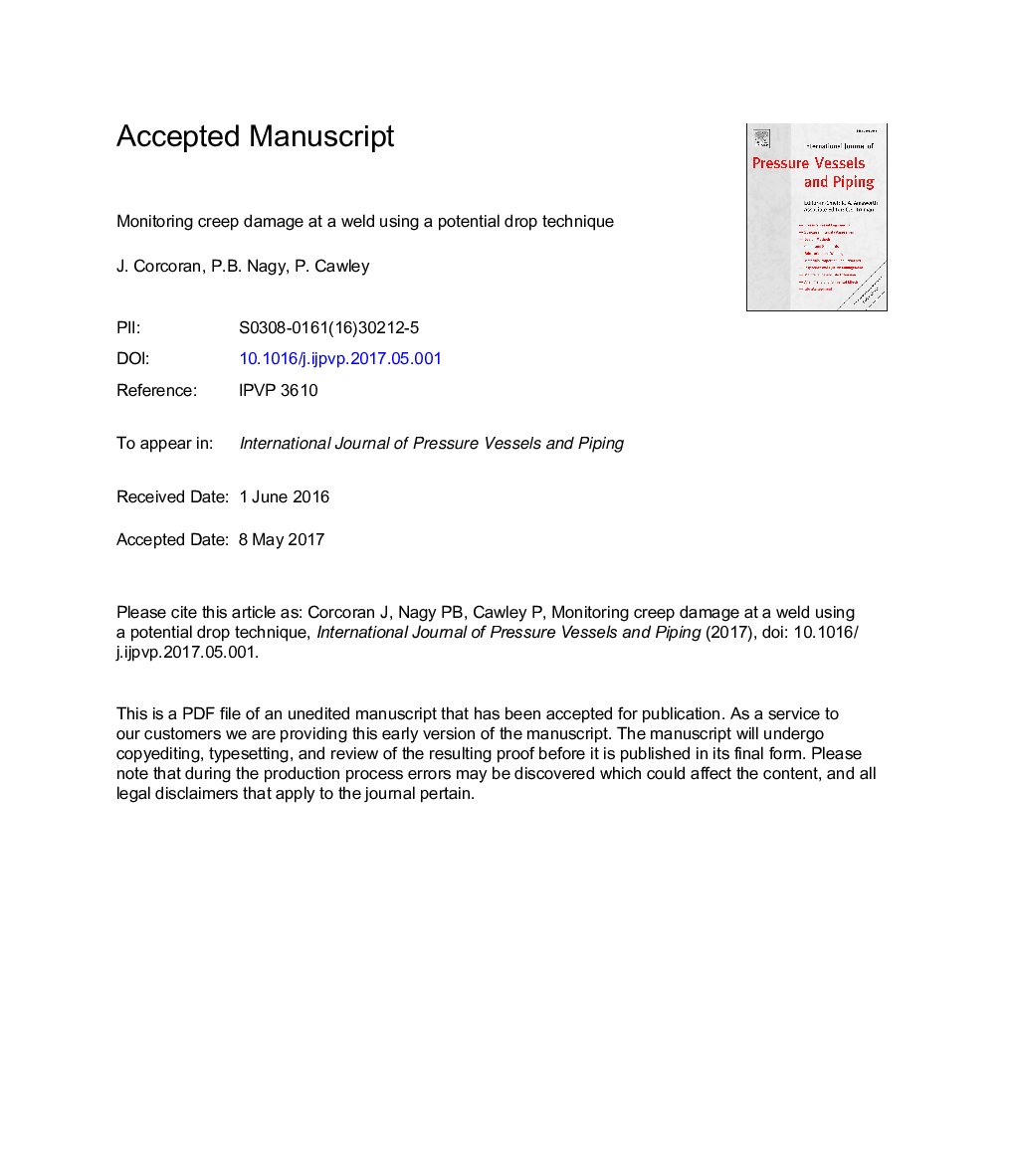| Article ID | Journal | Published Year | Pages | File Type |
|---|---|---|---|---|
| 5016856 | International Journal of Pressure Vessels and Piping | 2017 | 24 Pages |
Abstract
Welds of high-temperature pressurised components act as preferential sites for creep damage accumulation and will frequently be the life limiting feature. Type IV failures, where cracking occurs between the heat affected zone (HAZ) and parent material, are of particular concern in power station components. Typically damage will be characterised by locally high strain rates in the HAZ and local grain boundary separation leading to crack initiation and growth. A potential drop creep monitoring technique is suggested and demonstrated on cross-weld creep test specimens to be sensitive to both strain and cracking. The technique can be implemented as an array, discretizing a larger area into local measurements, providing contextual information and enabling the identification of local increases in damage. The influence of strain and cracking can be effectively separated to indicate crack initiation. The proposed sensor has very simple and robust high-temperature hardware lending itself to in-situ measurements in the field.
Related Topics
Physical Sciences and Engineering
Engineering
Mechanical Engineering
Authors
J. Corcoran, P.B. Nagy, P. Cawley,
